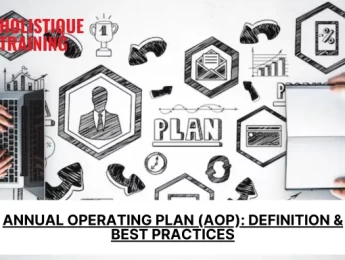- Table of Contents
- Meet the Mind Behind the Styles - Daniel Goleman
- Unveiling the Six Leadership Styles
- The Essence of Emotional Intelligence in Leadership
- Matching Styles to Situations - The Right Fit
- How Each Leadership Style Navigates Technological Changes in the Workplace
- Unravelling Your Leadership Style
- Conclusion
Leadership isn't merely about giving orders or delegating tasks. It's a complex interplay of skills, traits, and strategies that can profoundly impact an organisation's success and the well-being of its members. One individual who has delved deep into the intricacies of leadership is Daniel Goleman. Renowned for his groundbreaking work on emotional intelligence, Goleman has identified six distinct leadership styles that encompass a spectrum of approaches. In this exploration, we will navigate the landscape of these styles, their significance, and how they can be harnessed for optimal leadership effectiveness.
Meet the Mind Behind the Styles - Daniel Goleman
To truly grasp the profound insights behind the six leadership styles, it's imperative to acquaint ourselves with the luminary who unravelled this captivating tapestry of emotional intelligence and leadership. Daniel Goleman, a name synonymous with both psychology and leadership, has made an indelible mark in the realms of emotional intelligence, human behaviour, and effective leadership practices.
Goleman's journey into the realm of psychology began with his studies at Harvard University. It was here that he cultivated a deep fascination with the intricacies of human behaviour and emotions. His insatiable curiosity and dedication led him to earn a Ph.D. in psychology from Harvard and subsequently venture into journalism, where he showcased a remarkable knack for translating complex scientific concepts into accessible, enlightening narratives.
The inception of his groundbreaking work on emotional intelligence can be traced back to his time as a science journalist for The New York Times. In the mid-1990s, Goleman's book ‘Emotional Intelligence: Why It Can Matter More Than IQ’ sent shockwaves through academic circles and beyond. This work illuminated the significance of emotional intelligence in personal and professional success, catalysing a seismic shift in how individuals, educators, and leaders perceived human capabilities.
Goleman's profound insights extended further as he turned his gaze toward leadership. His seminal work "Leadership That Gets Results" unveiled a comprehensive framework for understanding the diverse ways leadership manifests. In this exploration, he crystallised six distinct leadership styles, each a testament to the intricate interplay of emotions, behaviour, and context.
Beyond his literary contributions, Goleman's influence is felt through his role as a speaker, consultant, and educator. His talks, workshops, and collaborations with organisations worldwide have transformed the way leadership is taught, understood, and practised. Goleman's amalgamation of scientific rigour and accessible communication has ensured that his work isn't confined to academia but permeates diverse sectors, from corporate boardrooms to classrooms.
In essence, Daniel Goleman is not merely an author or a researcher; he's a visionary who recognised the transformative potential of emotional intelligence in leadership. His intricate dissection of the human psyche and his ability to articulate complex concepts in relatable terms have positioned him as a trailblazer in shaping the landscape of modern leadership theory. The six leadership styles he unveiled stand as a testament to his commitment to enhancing leadership efficacy through a profound understanding of emotional intelligence and its dynamic applications.
Unveiling the Six Leadership Styles
Goleman's research underscores that leadership isn't a one-size-fits-all concept. Different situations demand different approaches, and Goleman identifies six leadership styles that cater to a variety of circumstances. These styles are not merely tools in a leader's arsenal; they represent the nuanced ways in which leaders can connect, inspire, and guide their teams toward success. Let's delve deeper into each of these styles to understand their intricacies and potential applications:
1. The Visionary Leader
At the heart of the visionary leadership style lies a vivid and compelling picture of the future. Visionary leaders are skilled architects of inspiration, capable of articulating a clear and ambitious vision that ignites passion within their teams. They are adept at answering the question, ‘Where are we headed?’
Such leaders understand that a shared sense of purpose is essential for galvanising collective effort. By communicating a captivating vision, they infuse their teams with a deep motivation to work towards a common goal. This style is particularly effective during times of change, transformation, or when an organisation is charting uncharted territories.
2. The Coaching Leader
Coaching leaders excel in fostering the growth and development of their team members. Their approach is rooted in mentorship, guidance, and creating an environment conducive to learning. They recognise that individual growth contributes to collective success and that investing in people pays dividends.
These leaders take time to understand the unique strengths and challenges of each team member. Through personalised support and constructive feedback, they create a space where individuals can thrive and unleash their potential. The coaching style is invaluable when nurturing talent, building skills, and cultivating a culture of continuous learning.
3. The Affiliative Leader
The affiliative style centres around building and maintaining strong interpersonal connections within a team. Leaders who adopt this approach prioritise creating a harmonious work environment, where trust, understanding, and collaboration flourish. They understand that a cohesive team is not just a collective workforce but a community of individuals.
In times of conflict, low morale, or when relationships need mending, the affiliative leader steps in to bridge gaps and restore trust. This style promotes emotional well-being, encourages open communication, and helps create a supportive ecosystem where team members can thrive both personally and professionally.
4. The Democratic Leader
Democratic leaders champion collaboration and inclusivity. They believe in harnessing the collective intelligence of their team by involving members in decision-making processes. This approach not only empowers individuals but also leads to well-informed choices that cater to diverse perspectives.
By valuing input from all corners, democratic leaders foster a culture of open dialogue and mutual respect. They understand that tapping into the varied insights of their team can lead to innovative solutions and a heightened sense of ownership. This style is particularly impactful when tackling complex problems that require multifaceted solutions.
5. The Pacesetting Leader
The pacesetting style is characterised by leading through example and setting high standards for oneself and the team. Leaders who adopt this style showcase an unwavering commitment to excellence, expecting nothing less from themselves and their colleagues.
This approach can be incredibly effective in fast-paced environments where swift action and results are imperative. However, it's essential to strike a balance, as pacesetting can sometimes lead to burnout or discouragement if expectations become unrealistic. By embodying the qualities they seek in their team, pacesetting leaders inspire a culture of dedication and continuous improvement.
6. The Commanding Leader
Commanding leaders take an authoritative stance, providing clear directives and expecting immediate compliance. While this style may seem rigid, it serves a vital role in urgent or crisis situations that demand swift decision-making and action.
When time is of the essence and a well-defined course of action is needed, the commanding leader steps in with clarity and assertiveness. It's crucial, however, to use this style judiciously, as an overreliance on it can stifle creativity, motivation, and the potential for collaborative problem-solving.
Incorporating Goleman's six leadership styles into your repertoire involves more than adopting personas. It's about understanding the unique dynamics of each style and deploying them strategically in alignment with the situation at hand. Effective leaders possess the versatility to transition between styles seamlessly, always with a keen sense of emotional intelligence and a deep commitment to steering their teams toward success.
Table 1: Challenges Every Type of Leader Faces
Leadership Style | Challenges Faced |
Visionary Leader | Balancing long-term vision with short-term goals. |
Coaching Leader | Ensuring individual growth aligns with team objectives. |
Affiliative Leader | Addressing conflicts without compromising team performance. |
Democratic Leader | Managing diverse opinions to reach consensus effectively. |
Pacesetting Leader | Preventing burnout while maintaining high performance standards. |
Commanding Leader | Fostering creativity and motivation amidst authoritative decisions. |
The Essence of Emotional Intelligence in Leadership
At the core of Goleman's leadership styles lies the principle of emotional intelligence (EI). This refers to the ability to recognise, understand, manage, and utilise emotions effectively in oneself and others. EI plays a pivotal role in effective leadership as it enables leaders to navigate complex interpersonal dynamics, inspire trust, and make informed decisions.
Leaders with high emotional intelligence are attuned to the emotions of their team members, allowing them to tailor their leadership style to suit the needs of the situation. They can empathise with their team's challenges, provide meaningful feedback, and adapt their approach to optimise team performance and well-being.
Matching Styles to Situations - The Right Fit
The effectiveness of a leadership style is not solely determined by the leader's preferences, but also by the context in which it is applied. Different situations call for different styles, and a skilled leader knows how to adapt. Let's delve into when each style is most beneficial:
The Visionary Leader
The visionary style shines when an organisation is undergoing a significant transformation, charting a new course, or when a team is in need of inspiration to achieve a shared goal. In times of uncertainty, the visionary leader provides a clear and compelling vision, steering the team towards a brighter future.
The Coaching Leader
When team members are seeking growth, skill development, and guidance, the coaching style comes into play. It fosters individual potential and builds capabilities. This style is particularly effective in nurturing talent, providing constructive feedback, and creating an environment conducive to continuous learning.
The Affiliative Leader
During times of conflict, low morale, or when fostering strong team bonds is essential, the affiliative approach is the right fit. The affiliative leader steps in to mend relationships, restore trust, and promote emotional well-being. This style creates a supportive ecosystem where team members can thrive both personally and professionally.
The Democratic Leader
When informed decisions are vital, and diverse perspectives are needed, the democratic style empowers team members to contribute their insights. This style is particularly impactful when tackling complex problems that require multifaceted solutions. The democratic leader fosters a culture of open dialogue and mutual respect.
The Pacesetting Leader
In situations demanding swift action, maintaining high standards, and leading by example, the pacesetting approach is the right fit. This style can drive immediate results in fast-paced environments. However, it's crucial to strike a balance, as excessive pacesetting can lead to burnout or discouragement.
The Commanding Leader
Urgent and critical situations that require rapid decision-making and immediate action benefit from the commanding style. The commanding leader provides clear directives and expects immediate compliance. However, it's essential to use this style judiciously, as an overreliance on it can stifle creativity, motivation, and collaborative problem-solving.
Strategic Deployment of Styles
Effective leaders recognise that each style has its time and place. They possess the ability to assess the specific needs of a situation and strategically deploy the most appropriate leadership style. This flexibility enables leaders to navigate a diverse range of challenges, promoting adaptability and resilience within the team.
Balancing Act
Leaders must strike a delicate balance between different styles, avoiding rigidity and embracing a dynamic approach. While certain situations may call for a predominant style, effective leaders understand the importance of adapting to changing circumstances. This adaptability fosters a culture of innovation, creativity, and continuous improvement within the team.
Situational Awareness
Developing situational awareness is a crucial leadership skill. Leaders must be attuned to the ever-changing dynamics of their team and the external environment. By staying informed and perceptive, leaders can make informed decisions about which style will be most effective in a given situation.
Individualised Approach
Furthermore, effective leaders recognise that individuals within a team may respond differently to various leadership styles. Tailoring leadership approaches to individual team members based on their strengths, preferences, and developmental needs enhances the overall effectiveness of the leadership strategy.
In short, the right fit between leadership styles and situations is a nuanced dance that effective leaders master. By understanding the intricacies of each style and strategically deploying them based on the context, leaders can cultivate an environment that promotes success, innovation, and the well-being of their teams. As you navigate your leadership journey, remember that flexibility and situational awareness are key components of effective leadership.
How Each Leadership Style Navigates Technological Changes in the Workplace
Visionary Leader
In the face of technological shifts, the visionary leader excels by envisioning the future landscape and embracing innovation. They inspire the team with a clear technological roadmap, aligning advancements with organisational goals. By fostering a culture of adaptability, visionary leaders ensure their teams are well-prepared for the digital age.
Coaching Leader
Technological changes can be challenging for individuals adapting to new tools and processes. The coaching leader plays a pivotal role by providing personalised guidance and support. They focus on upskilling team members, ensuring a smooth transition and fostering a learning environment where the team feels empowered and confident in utilising new technologies.
Affiliative Leader
During technological transformations, the affiliative leader emphasises the human aspect of change. They prioritise open communication, fostering a sense of unity and collaboration among team members. By acknowledging concerns and addressing them empathetically, affiliative leaders create a supportive environment that eases the integration of new technologies.
Democratic Leader
Technological changes often bring about diverse opinions and perspectives. The democratic leader harnesses the collective intelligence of the team by involving them in decision-making regarding technological implementations. This inclusive approach not only ensures diverse insights but also enhances team buy-in and commitment to embracing technological advancements.
Pacesetting Leader
The pacesetting leader is adept at setting high standards and expectations, including the rapid adoption of technological advancements. They lead by example, showcasing the use of new technologies and inspiring the team to follow suit. However, it's crucial for pacesetters to balance high expectations with support to prevent overwhelming the team during technological transitions.
Commanding Leader
In the realm of technological changes, the commanding leader provides clear directives and ensures immediate compliance. While this approach can be effective in implementing swift technological decisions, it requires careful consideration to avoid stifling creativity and adaptability. A judicious use of authority is essential for maintaining a motivated and innovative team.
Unravelling Your Leadership Style
Statistics show that merely 10% of individuals possess inherent leadership traits, while an additional 20% exhibit fundamental managerial qualities that can be nurtured into elevated leadership proficiency. No matter where you are on the spectrum, it’s essential to know what your leadership—or potential—leadership style is. Identifying that is a process of self-awareness and reflection. Here's a roadmap to help you uncover your dominant style:
1- Reflect on Past Experiences
Looking back at moments where your leadership had a significant impact provides valuable insights into your innate leadership tendencies. Consider instances when you faced challenges, led a successful project, or navigated a team through adversity. Reflect on the outcomes and the approach you instinctively adopted. This retrospective analysis can unveil patterns and preferences in your leadership style.
2- Seek Feedback
Gathering feedback from colleagues, mentors, or team members is an essential aspect of understanding your leadership style. Others' perspectives can provide valuable insights into your strengths and areas for growth. Reach out for candid feedback on how you handle decision-making, communication, conflict resolution, and overall team dynamics. This external input can complement your self-perception and contribute to a more comprehensive understanding of your leadership approach.
3- Analyse Your Reactions
Pay close attention to how you naturally respond to various challenges or situations. Do you tend to provide solutions and take charge, demonstrating a commanding style? Are you more inclined to listen empathetically, fostering a coaching or affiliative approach? Alternatively, do you set high standards for yourself and others, reflecting a pacesetting inclination? Analysing your reactions in different scenarios provides insights into your default leadership tendencies.
4- Consider Situational Context
Assessing which style you tend to gravitate towards in specific situations is crucial for understanding the adaptability of your leadership approach. Do you find yourself being more affiliative during conflicts, or do you default to a visionary approach when outlining long-term goals? Recognising the situational context that influences your leadership style enhances your ability to flexibly adapt to diverse challenges.
5- Continual Learning
A whopping 83% of businesses agree on the critical significance of leadership development, according to Highrise. You need to recognise that leadership is a journey of growth, and embracing a mindset of continual learning is integral to refining your leadership skills. Seek knowledge from diverse sources, learn from both successes and failures, and remain open to adapting your leadership style as needed. Engaging in professional development opportunities, attending leadership workshops, and staying informed about evolving leadership trends contribute to your ongoing growth as a leader.
Unravelling your leadership style is not a one-time endeavour but an ongoing process of self-discovery and refinement. It involves synthesising insights from past experiences, incorporating external feedback, analysing your natural reactions, considering situational nuances, and maintaining a commitment to continuous learning.
Remember that leadership is dynamic, and effective leaders exhibit versatility in their approach. As you gain a clearer understanding of your dominant leadership style, strive to leverage its strengths while remaining adaptable to the ever-changing demands of your role. Embracing a personalised leadership approach fosters authenticity, builds trust within your team, and sets the foundation for your continued growth and success as a leader.
Conclusion
Daniel Goleman's six leadership styles offer a comprehensive framework that acknowledges the dynamic nature of leadership. By embracing emotional intelligence and recognising the right fit for each situation, leaders can steer their teams toward success while fostering a culture of collaboration, growth, and adaptability. As you embark on your leadership journey, remember that mastering these styles is not just about adopting a role but embodying a mindset that propels both individuals and organisations toward excellence. If you're eager to delve deeper into these styles and refine your leadership skills, make sure to enrol in our course, ‘Perfecting Your Management and Leadership Skills,’ where you'll gain hands-on insights and tools to become an exceptional leader in any context.
























